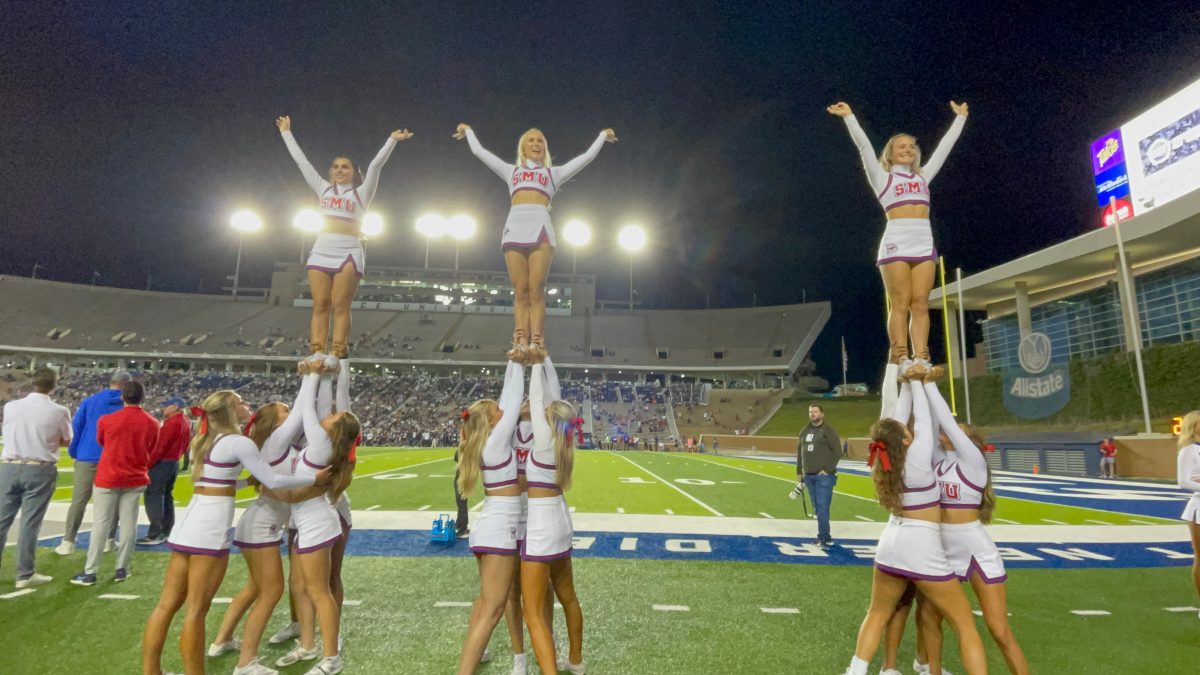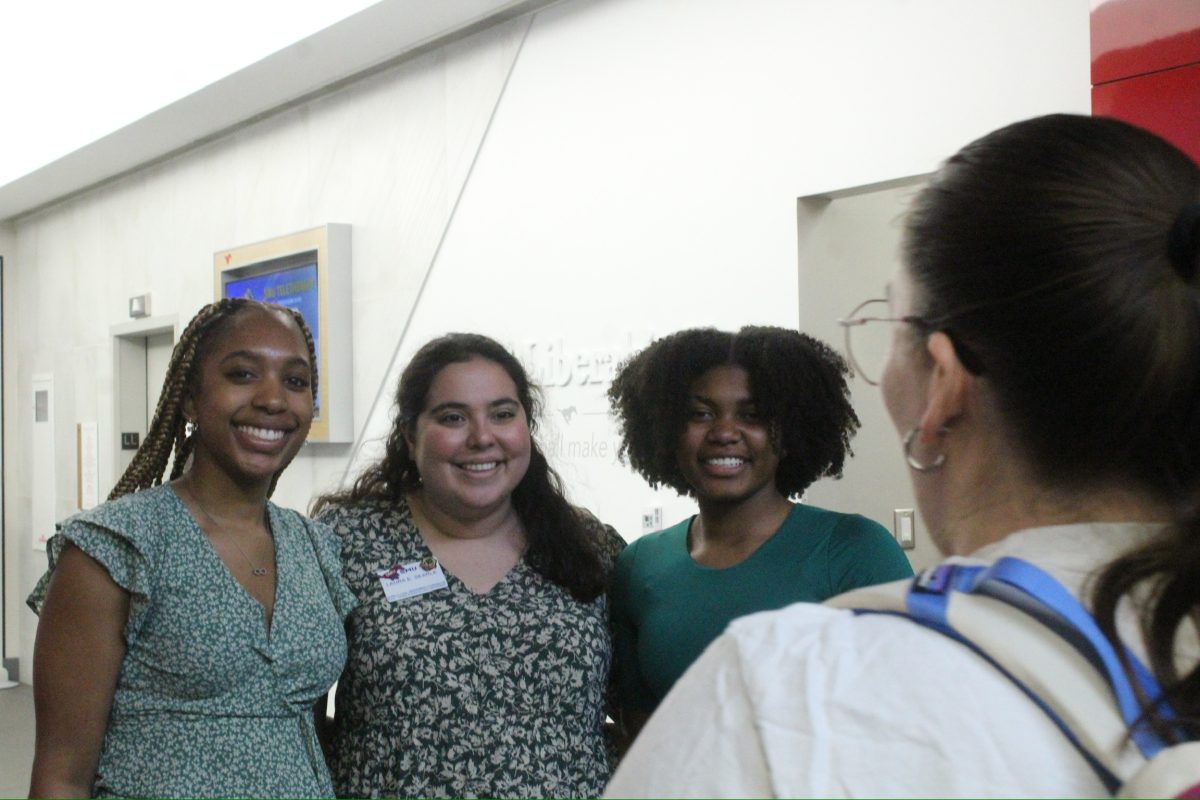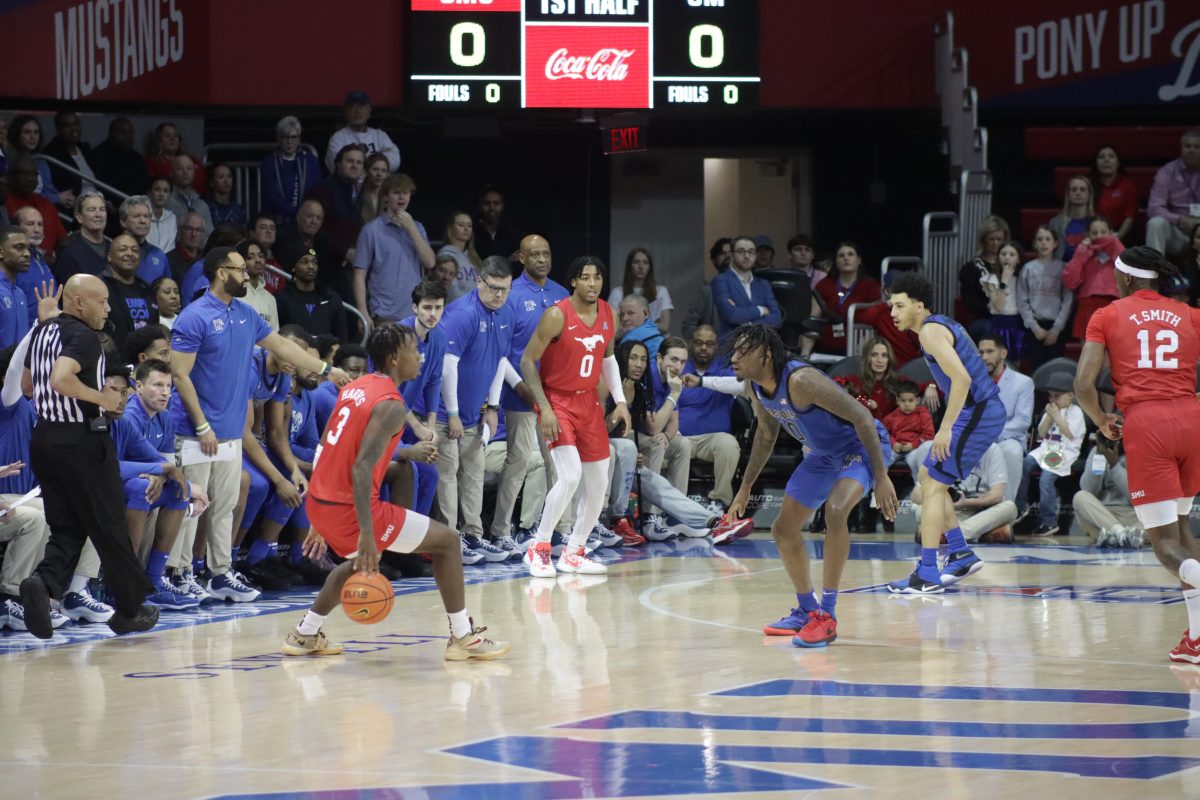SMU’s new tennis complex will provide state-of-the-art amenities and could dramatically improve the relevance and success of the university’s tennis teams.
After practicing and competing off campus for almost two and a half years since their stadium was demolished, the men and women’s tennis teams are scheduled to return to SMU in August to a state-of-the-art, $20 million facility.
“It arguably will be the best training center in the United States,” said SMU men’s tennis Head Coach Carl Neufeld. “It’s the most comprehensive training center in that we’ve got indoor and outdoor courts directly connected to each other.”
Women’s Head Coach Kati Gyulai said her team struggled with injuries, and she looks forward to giving the players access to the training room, post-practice treatment and rehabilitation.
The new complex – on the southwest corner of Mockingbird Lane and North Central Expressway – will feature six indoor and six outdoor tennis courts, offices, locker rooms and a VIP area that overlooks both the indoor and outdoor courts. Neufeld said opening matches scheduled there will be against nationally ranked teams including Baylor, Texas, Oklahoma and many of the nation’s top 20.
University architect Philip Jabour said the all-in-one complex will provide space for practice and competition, “something they haven’t had for some time.”
In addition to amenities for the tennis team, the new complex will contain seminar rooms to host events other than tennis and outdoor seating capable of expanding to 2,000-plus seats.
The players said they hope the new complex will create a long-awaited home-court advantage.
“We will consistently get to play at the same place and have a home ground. … Having courts is obviously something recruits look at,” junior tennis player Holly Verner said. “Hearing people cheer for your team really boosts confidence and it helps in tough situations.”
The coaches and student-athletes will have to become accustomed to a home-court advantage, the women’s coach said.
“The players don’t know what it means to have a home base,” Gyulai said. “It’s our house. No one comes in. We have to protect it.”
Redshirt sophomore Nathaniel Lammons said the new complex will help bring the improving team more national relevance. “We will play with more energy and passion for sure,” he said.
The SMU tennis complex is budgeted at $20 million, and is part of a larger $1.3 billion master plan covering all three of SMU’s campuses – Dallas, Plano and Taos – scheduled for completion in 2015.
Two of the marquee components of the plan were building the residential commons complex, which opens this fall, and renovating Moody Coliseum, which reopened Dec. 21. After the basketball team returned to Moody, it went on an explosive run, ending with a trip to the National Invitation Tournament finals.
“Higher education is extremely competitive, and we’ve got to continually have state-of-the-art facilities to support the faculty, staff and students that are coming here,” Jabour said.
The tennis teams have been practicing off campus since 2012, when Turpin Tennis Stadium was demolished to make room for the residential commons. The teams currently split time among Northwood Club, The Village Country Club, Royal Oaks Country Club and many others.
“We’ve played at over 12 clubs – in terms of matches – over the last few years,” Neufeld said.
Cutting the travel, Neufeld said, will maximize students’ time to incorporate tennis with their studies. And traveling had interfered with the teams’ development, he added.
“Bent Tree Country Club takes about 20 minutes to get there and coming back it might take 35,” Neufeld said. “Those 60 minutes cannot come out of studying in the classroom, so they ultimately come out of tennis.”
“We were spending five to six hours a week driving,” Gyulai said.
The NCAA allows tennis teams to practice for a maximum of 20 hours a week, not including transportation time.
Jabour and Neufeld said a top-notch facility has the potential to be a draw for potential recruits.
“It gives a totally different impression of the commitment from the university and the opportunity to excel,” Neufeld said. “They cannot only have a great academic institution, but in many cases the tennis program could be the tiebreaker.”
However, athletes and officials said recruiting will not be the new facility’s most important return on the investment. Vernon said she’s most excited about “just having a home ground and my own place, somewhere for my team to be together.”
“Next year we’re going to start building a fan base,” Gyulai said. “I believe a fan base would make us play with more pride. … There is something on the line. We’re there to perform and we understand that.”
“Our goal is to have the top attendance of any college by year two,” Neufield said. “And if we’re not No.1, we’ll be in the top 10.
“This isn’t a club. This is a stadium set up to watch tennis, and there is going to be a lot of great tennis to watch.”












